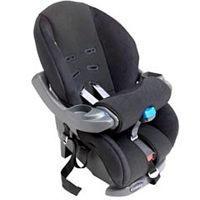Security and stability are the key factors in buying baby equipment. First, look for the seal of approval from the Consumer Product Safety Commission (http://www.cpsc.gov/), and examine items carefully to make sure they are stable and without safety hazards. Additional guidelines have been established by the Juvenile Products Manufacturers Association (http://www.jpma.org/), and you may want to see if the product conforms to these voluntary standards.
Here are some general safety guidelines to follow:
Advertisement
- Run your fingers over the equipment, and touch every spot with which the infant is likely to come in contact. Avoid rough surfaces or surfaces that could become dangerously hot if exposed to the sun.
- Inspect all hinges, springs, or moving parts to make sure there are no places where your baby's hands, feet, fingers, or toes could get caught or pinched.
- Examine all small parts, straps, and coverings to make sure they are fastened securely.
- If equipment needs to be assembled, read and follow all manufacturer's directions.
See more specific guidelines on the next page.
Advertisement



